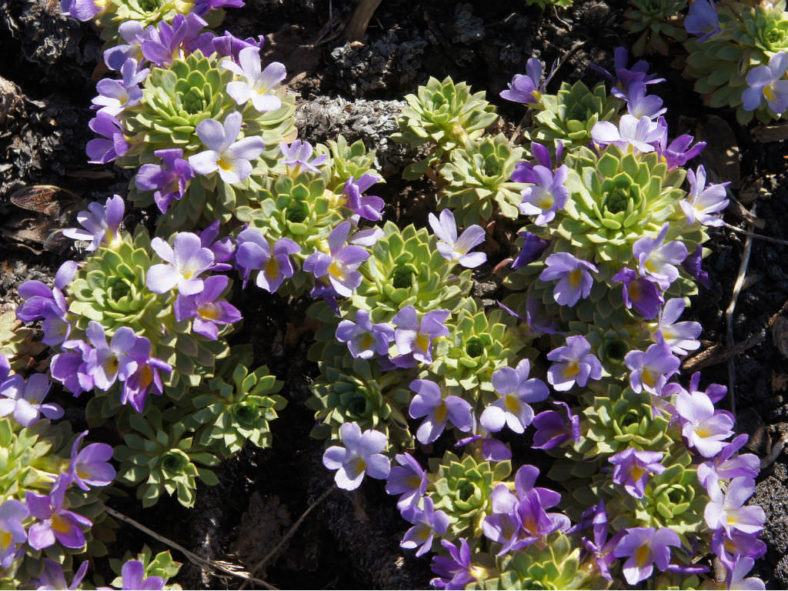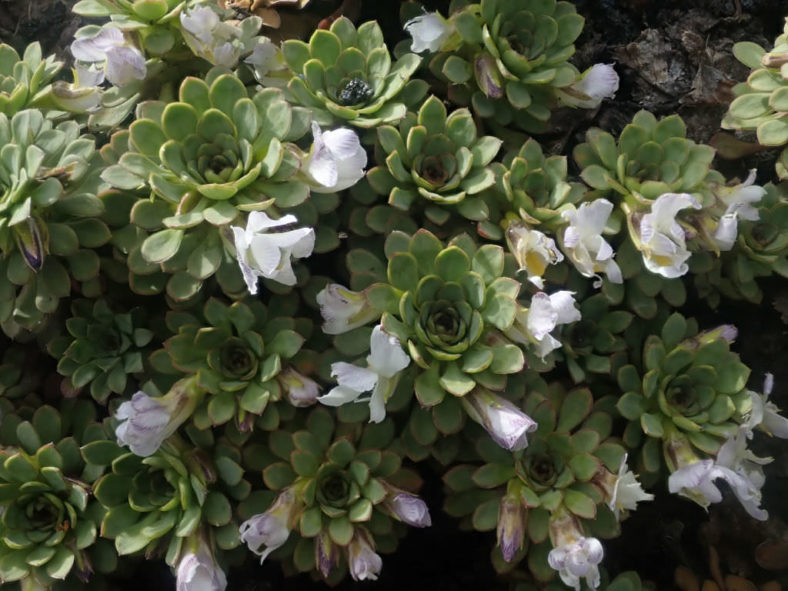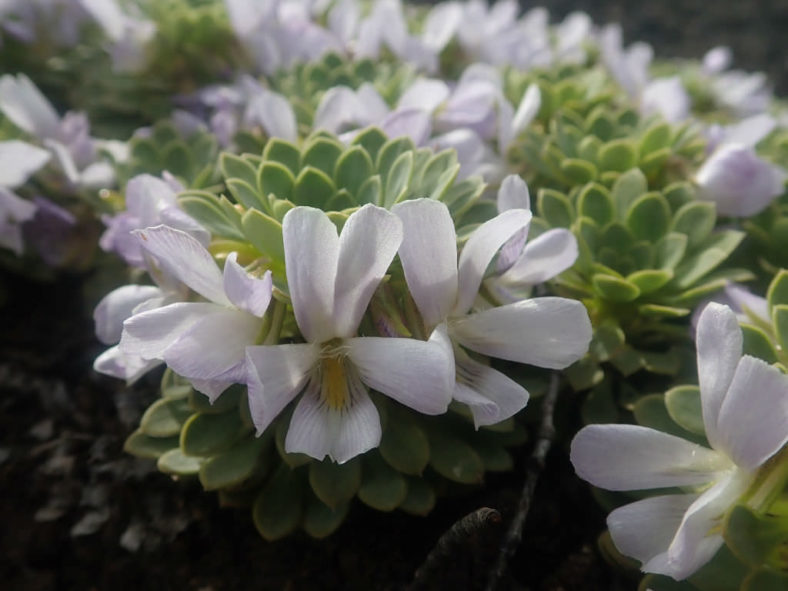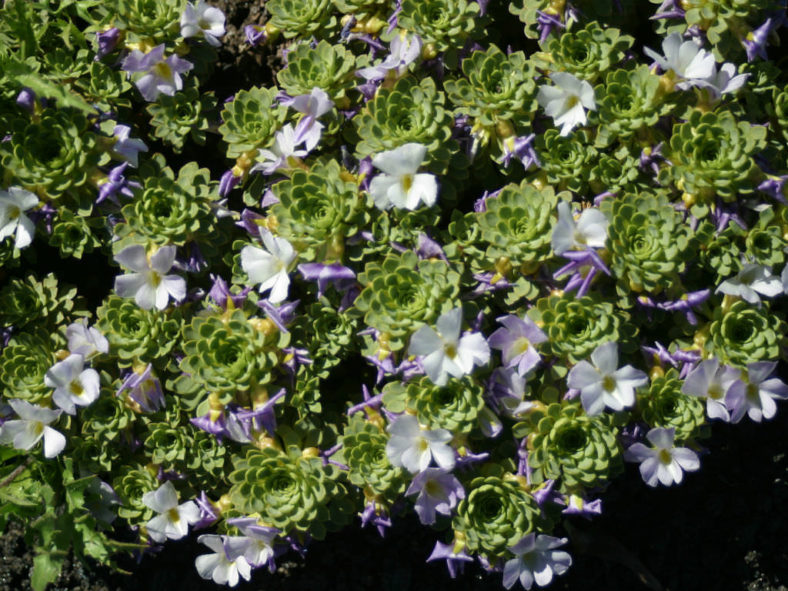Scientific Name
Viola cotyledon Ging.
Synonym(s)
Viola comberi
Scientific Classification
Family: Violaceae
Subfamily: Violoideae
Tribe: Violeae
Genus: Viola
Etymology
The specific epithet "cotyledon" (pronounced kot-EE-lee-don) means "a cavity, small cup, any cup-shaped hollow" and probably refers to the distinctive shape of the rosettes.
Origin
Viola cotyledon is native to Argentina and Chile.
Description
Viola cotyledon is a beautiful perennial plant that forms rosettes of ovate, green, semi-succulent leaves with white, cartilaginous margins. It belongs to the group of Rosulate Violas.
The flowers appear in early summer and stand in a ring around the outer edge of the rosette. They vary in color from pure white to dark blue.

How to Grow and Care for Viola cotyledon
Rosulate Violas have a reputation for being difficult to keep alive. Therefore, cold conditions, soil containing adequate nutrients, and as much light as possible are essential.
Soil: They grow in relatively bare, loose soils, often volcanic in origin.
Hardiness: Viola cotyledon can withstand temperatures as low as 0 to 50 °F (-17.8 to 10 °C), USDA hardiness zones 7a to 11b.
Propagation: Rosulate Violas are grown only from seed and with some patience.
The main problem with these plants is etiolation, caused by a lack of light, resulting in the elongation of the compact rosettes. However, it is known that some of the seedlings will quickly etiolate, while others will not. So, there is some scope in selecting Rosulate Violas that are more likely to grow satisfactorily in cultivation.
Learn more at How to Grow and Care for Rosulate Violas.
Toxicity of Viola cotyledon
Violas are nontoxic for humans and pets. Both the flowers and leaves are edible, fresh, cooked, or dried.
Links
- Back to genus Viola
- Succupedia: Browse succulents by Scientific Name, Common Name, Genus, Family, USDA Hardiness Zone, Origin, or cacti by Genus
Photo Gallery
Click on a photo to see a larger version.


